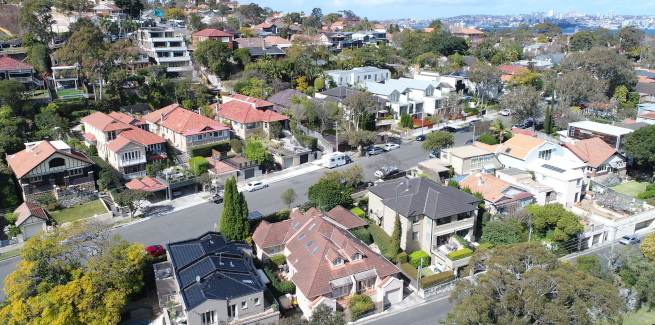Committee for Sydney has published a paper on the cost of living, with deputy chief executive Ehssan Veiszadeh calling for the federal and state levels of government to make changes around housing policy.
Housing costs are the largest economic problem facing Sydney, according to the report, as property prices have risen by 23.7 per cent since March last year.
“Without a major change to housing price dynamics, Australia is sleepwalking into a permanent class divide, where only those who inherit wealth are able to obtain the security of home ownership,” the Committee for Sydney paper stated.
It has blamed tax policy settings at a national level, pointing to negative gearing and capital gains tax.
“If we want to increase [the] rates of home ownership, that means decreasing rates of investment property ownership,” the paper stated.
State governments and development approval processes have also been implicated, for a chronic undersupply of housing.
Committee of Sydney paper noted only 30 per cent of houses in NSW are approved via a complying development pathway, a planning and construction approval process involving a fast-tracked assessment by a council or an accredited certifier, compared to 70 per cent in Queensland.
Similarly, the CEOs of major developer Mirvac and construction and materials supplier Boral have called planning the top issue in housing, commenting the government’s main priority should be improving supply and planning approvals.
The National Housing Finance and Investment Corporation (NHFIC) has warned lagging approvals were contributing to a surge in house prices and that the supply pipeline may fall behind demand as Australia’s international borders reopen.
According to NHFIC, some new apartment blocks in Sydney could take as long as six years to hit the market.
At the same time, the Committee of Sydney stated there has been a failure to invest in social and affordable housing, such that it now makes up around 4 per cent of the housing stock in Sydney, in contrast to around 10 per cent or more in other global cities.
“Quick fixes won’t solve what’s set to be the highest inflation since the GFC. What we need is a real long-term strategy to make Sydney more affordable,” Mr Veiszadeh said.
“While homeowners may want the cost of housing to remain high, young people and low to middle income families are being locked out of future home ownership.”
The quick fix, according to Committee of Syndey, would be to approve lots of housing on greenfield sites on the outskirts of the NSW capital.
But following this model would lock households into permanent high spending on transport, as many adults working around the city centre would need their own car and inflation has forced the cost of petrol to soar.
“This forces people into paying large amounts for petrol each week and spending a disproportionate amount of time commuting. Many of these homes are expensive to cool and expensive to heat,” the report stated.
Placing greenfield developments in floodplains could exacerbate the issue, Committee of Sydney warned, amid risks of more frequent extreme weather and rising costs of home insurance.
Instead, the body has envisioned a housing plan that would allow individuals to live in neighbourhoods where many trips could be taken for free (either walking or cycling) or for low cost (public transport).
“We need a transport strategy that ends car dependence at scale. That means continuing to invest in building out Sydney Metro and creating a complete network of physically separated cycleways across Greater Sydney,” the report stated.
“We need a planning strategy that delivers walkable communities at scale. That means overcoming the long-term housing supply shortage while being smart about the location and format of housing.
“The best planning strategy is to cluster development around rail stations in mixed use, walkable formats.”
[Related: March quarter shows housing sentiment steady: NAB]
 ;
;
